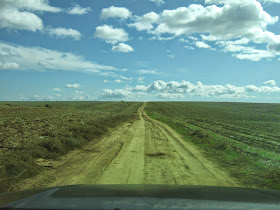One of the pleasures of field work is coming across something that I know nothing about and is - well a bit perplexing. During a recent landslide assessment I came across these back stains on the soil just below the landslide scarp.
The black stains were all associated with Douglas fir roots.
What I did find, as can be seen above, is the stains were only on the surface of the soil. This suggests that the staining took place only after the landslide took place. I should add that there roots are connected to trees that had been cute down within the past two years.
The stains appeared to be related to some sort of fluid released from the roots. Perhaps some sort of resin dripping on the surface of the soil.
For me a random observation that I have no place to put and know nothing about. So afraid there is no lesson in this post. That said, it is great fun to observe something new and know nothing about the observation. Mystery and the unknown are wonderful.




























































